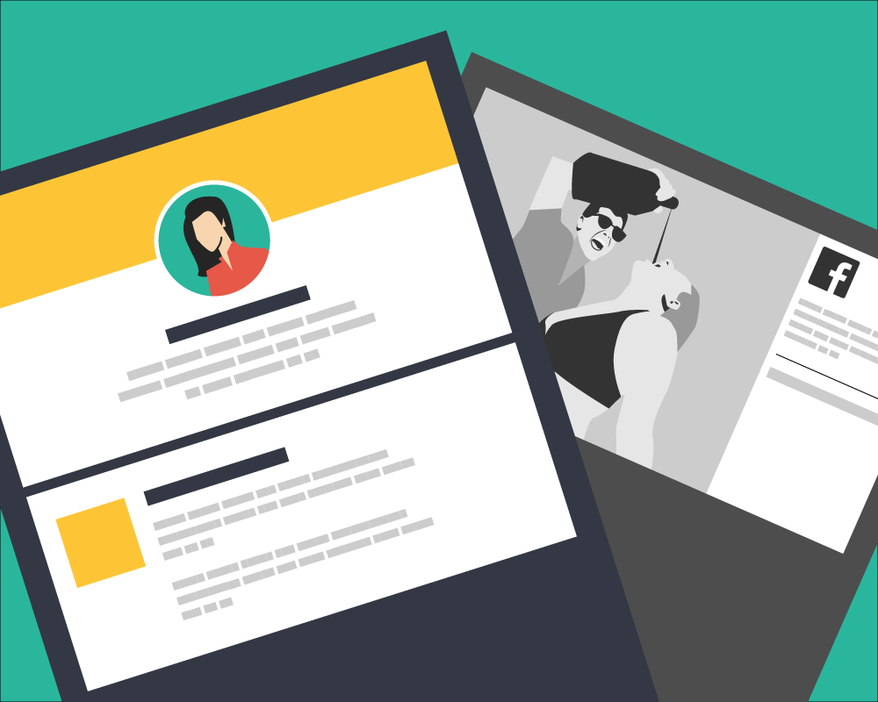
So you’re looking for a new job. Yay! Okay, okay. I know that no one enjoys job searching. It can be confusing and frustrating to apply for jobs online.
You probably have a lot of questions. What are companies looking for? What should I put on my LinkedIn page? Did this application just go into cyberspace? Will I ever get an interview?
Never fear. Here are 5 handy tips on how to optimize your online presence when searching for a new job. If you follow these guidelines, you’ll boost your chances of hearing back from your potential dream job.
1) Scrub your social media profiles of unprofessional content.
Make sure anything you don’t want potential employers to see is hidden or private.
This might be a no-brainer, but you’d be surprised what a short Google search can uncover about your personal life.
It’s illegal for employers to ask questions about stuff like your age or ethnicity, but nothing is keeping a curious recruiter from perusing your Facebook page. And let’s be honest, some of those pics from 2014 spring break don’t portray you in the most (cough cough) professional light.
Take down any unprofessional photos and make sure they aren’t still showing up on a Google search. Better yet, set your social media accounts to private. (Or you can take a page from my book and delete your Facebook altogether. You’ll be more productive, I promise!)
Of course, this doesn’t apply to all jobs. If you’re applying for a social media manager position, a lively Instagram feed and active personal blog can add to your application. Just make sure that every single one of your social media accounts is ready for a potential employer to look at.
2) Update your LinkedIn.
While your resume has to stick to one page, your LinkedIn profile can fit all of the comprehensive details you might’ve left out. Use your resume as a guide and fill out your work experiences, education, certifications, and skills. Use bullet points to elaborate on specific responsibilities and achievements.
Don’t worry about getting to that coveted 500 connection status. Instead, focus on making sure that all of your work experience is accurate and in sync with your current resume. A LinkedIn summary is recommended, but not required. (And please save the weird fluff for Twitter.)
Your summary is a great place to show off your biggest wins and your future ambitions. It also gives employers a quick taste of your writing skills and personality.
Bonus tip: if you’re looking to switch career paths or searching for a very particular job, target the wording of your work experience to reflect the skills and qualities necessary for the desired position. Never put fake or embellished work experience on LinkedIn. There’s a difference between lying and tailoring your message to your audience.
For example, if you want to become a digital marketing analyst, highlight any analytical experience you have and make sure your interest in digital marketing is evident.
3) Smile! Upload a recent, professional photo to LinkedIn.
Just say no to blurry, outdated, or unflattering LinkedIn profile photos. According to a study run by photofeeler.com, the best LinkedIn photos are taken while you’re smiling, wearing formal clothing, and are of your bust (head and shoulders) or torso (head to waist).
Don’t have a professional headshot? No worries. Have your roommate, significant other, or mom take a few shots of you and upload them pronto. This photo may be the first impression of you, so you’ll want to be looking your best and most professional (i.e., don’t take it right after your hot yoga class).
4) Optimize your online portfolio or personal website.
If you have a personal website, good for you. Remember: a good personal website is an asset, but a poorly designed site with bad user experience and 4+ fonts isn’t going to help you get the job.
If you’re not a designer, use a clean design template from WordPress or Squarespace instead of hacking together a mediocre site. Before linking to your site, ensure that it’s working properly and that there are no typos.
Keep in mind that potential employers and recruiters will be looking at your site and that it should be relevant to the jobs you’re applying for. If your dream job is an Art Director but you’re currently applying for analyst roles, maybe skip linking to your personal site which outlines your career trajectory as a graphic artist. That will probably dissuade an initial interview request.
5) Be active online.
You’ve made it to step 5. By now, your online presence is almost picture perfect. This last tip is for all you overachievers and perfectionists. More power to you!
If you want to go above and beyond while job searching or even attract job opportunities to come to you, start posting relevant, engaging content.
Developing your voice online has become a new way to develop your personal brand and get noticed. Not sure where to start? Here are some ideas:
- Follow your favorite thought leaders in the industry.
- Post content that’s engaging and relevant to the job field that you’re interested in.
- Establish yourself by writing quality content.
- Start a blog (even if it doesn’t get a lot of readers!) dedicated to the industry you’re interested in, and your potential employers will notice.
- Engage others in the industry by commenting on and sharing their content. Joining the conversation online will help establish you as an authority online and build trust with future employers, which will give you a huge advantage in interviews.
--
If you follow these steps, you’ll still have to ace the interview round. Check out our phone interview and in-person interview advice.
PS: We’re currently hiring interns! Check out the positions after you polish up your online presence.
